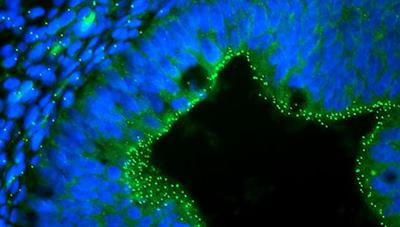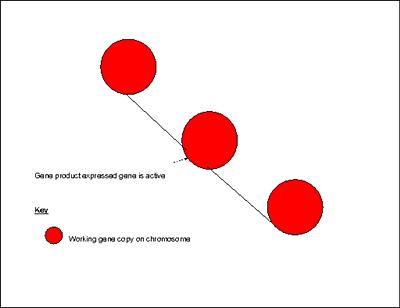
Background into Genetics
Every gene is an individual and specific set of instructions for performing a particular task in the body. These instructions are in the form of a genetic code made up of a sequence of DNA letters (or bases). As an analogy, if the individual bases are letters, then the whole genome (all DNA contained in an organism or a cell) is the entire instruction manual, and each gene is a short chapter showing how to perform one particular function in the body.
Most genes act as an instruction for making proteins: small cellular machines that perform certain tasks in the body. In another analogy, if every cell in the body is a little factory, then each protein is one kind of machine within the factory - The gene would be the instruction manual for how to make that machine work and exactly when and where to use it.
As far as scientists can currently estimate at the moment, it takes approximately 30,000 genes to make up a person. These genes are ‘stored’ (in no particular order) in physical bodies of DNA called chromosomes. Each one of us has one complete set of chromosomes from our mother, and one from our father. Therefore, in just about every cell of the body there should be two working copies of each gene.
- One copy comes from the mother (the maternal copy of the gene, on the chromosome copy inherited from the mother)
- One copy comes from the father (the paternal copy of the gene on the chromosome copy inherited from the father).
Usually, the maternal and paternal copies are identical, and both can be used by the cells to make proteins. Different cells use different sets of proteins, of course; this is what makes different cells in our body do their various jobs. Both the maternal and paternal gene copies are usually active or ‘expressed’ equally in cells.
What is Genetic Imprinting?
The term 'imprinting' refers to the fact that some genes, are ‘stamped' with a ‘memory' of the parent they came from: in the cells of a child it is possible to tell which gene copy is from the mother (maternal gene) and which copy is inherited from the father (paternal gene).
The special ‘memory stamp' associated with an imprinted gene usually inactivates or ‘turns off' the gene in cells. For imprinted genes therefore, one copy is turned off and only one is working: this is determined not by the DNA sequence of the gene, but simply which parent it came from.
This process, where the working of a gene copy is determined by whether it came from the father or the mother, is called genetic imprinting.
How does imprinting occur?
It is thought that there are a number of mechanisms for ‘stamping' genes to modify their expression (turning on or activation), according to the parent they came from. This modification, which determines whether the information contained in the gene copy is expressed (active) or not, is called an imprinting mark or an imprint.
Imprinting marks are re-set at each generation during the development of the ‘germ cells' - that is, the eggs or sperm - that will carry the DNA to make new individuals.
Imprinting marks are ‘stamped' on DNA near imprinted genes, but their effects can spread out (through mechanisms that aren't currently fully understood) to control several neighbouring genes under the same imprint. The area of the DNA where the ‘stamp' is set is called an ‘imprinting control region' or ICR. ICR's are all made of DNA, but that's about all they have in common!
There are different sorts of imprinting mark; but the mark most often studied by doctors is called DNA Methylation.
If imprinting goes wrong then it may cause a problem with human development and we refer to such conditions as ‘Imprinting Disorders'. There are several different imprinting disorders, affecting different imprinted genes. The exact nature of the disorder for any individual patient depend on which imprinted genes are involved and what exactly has gone wrong with them.

